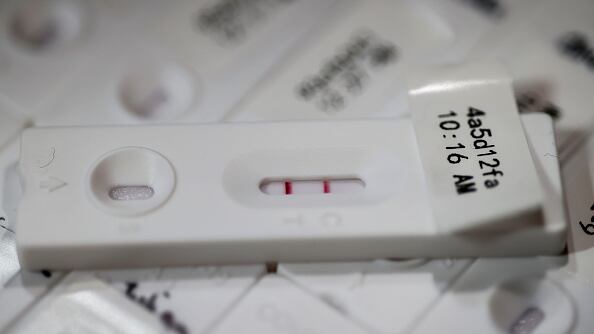A new group of COVID-19 variants are sparking concerns about a potential flare-up of the virus over the summer months.
The family of variants, called “FLiRT,” include KP.2, which is now the dominant variant in the United States, according to the Centers for Disease Control and Prevention. The variants are part of the omicron family.
The variants are called FLiRT based on the technical names for their mutations, one of which includes the letters “F” and “L,” and another of which includes the letters “R” and “T.”
Currently, KP.2 accounts for one in four infections nationwide, data from the CDC shows. The others are JN.1, and JN.1 subvariants JN.1.7 and JN.1.13.1.
KP.2 quickly overtook JN.1, the omicron subvariant that drove a surge in COVID cases this past winter.
The variant may be more contagious than previous variants, according to Dr. William Schaffner, professor of infectious diseases at Vanderbilt University Medical Center.
“It’s still early days, but the initial impression is that this variant (KP.2) is rather transmissible,” Schaffner told TODAY.com.
During a two-week period ending April 27, KP.2 made up nearly 25% of cases in the U.S., up from about 10% only two weeks prior.
Dr. Eric Topol, executive vice president at Scripps Research, who wrote about the FLiRT variants in a recent edition of his newsletter, said FLiRT variants may be better at dodging immune protection from vaccines than JN.1 was.
“That isn’t good,” Topol told Time.
More than 97% of the people in the U.S. have natural or vaccine-induced antibodies against the SARS-CoV-2 virus, according to CDC data. However, the agency warns that immune protection fades over time.
According to Schaffner, studies suggest immunity from prior infection will only provide partial protection from KP.2.
“We’ll have to see how true that is, but it appears, over time to be becoming a more prominent variant,” he adds.
CDC data shows cases of COVID-19 are down across the country after an increase during the winter months.
What are the symptoms of the FLiRT variants?
“The FLiRT variants are probably not going to create very distinctive symptoms. It looks at the moment to follow the other subvariants,” says Schaffner.
According to the CDC, the symptoms of the FLiRT variants are similar to those caused by JN.1, which include:
- Sore throat
- Cough
- Fatigue
- Congestion
- Runny nose
- Headache
- Muscle aches
- Fever or chills
- New loss of sense of taste or smell
- Shortness of breath or difficulty breathing
- Nausea or vomiting
- Diarrhea
© 2024 Cox Media Group











